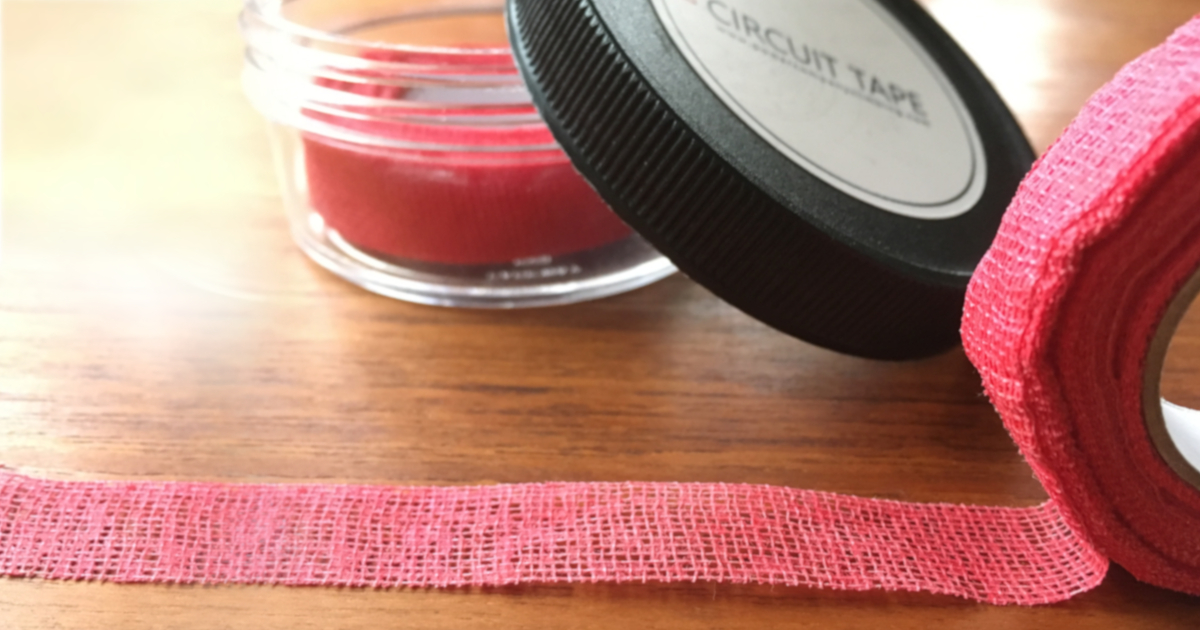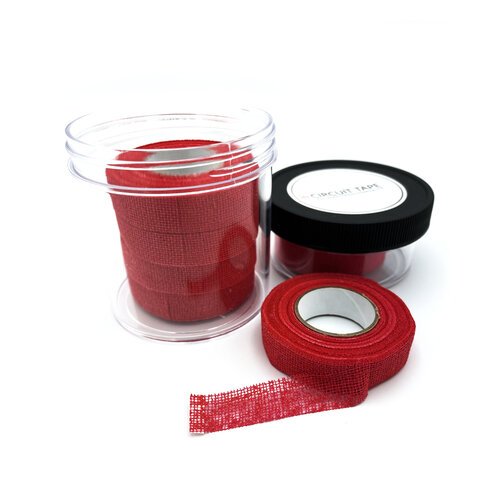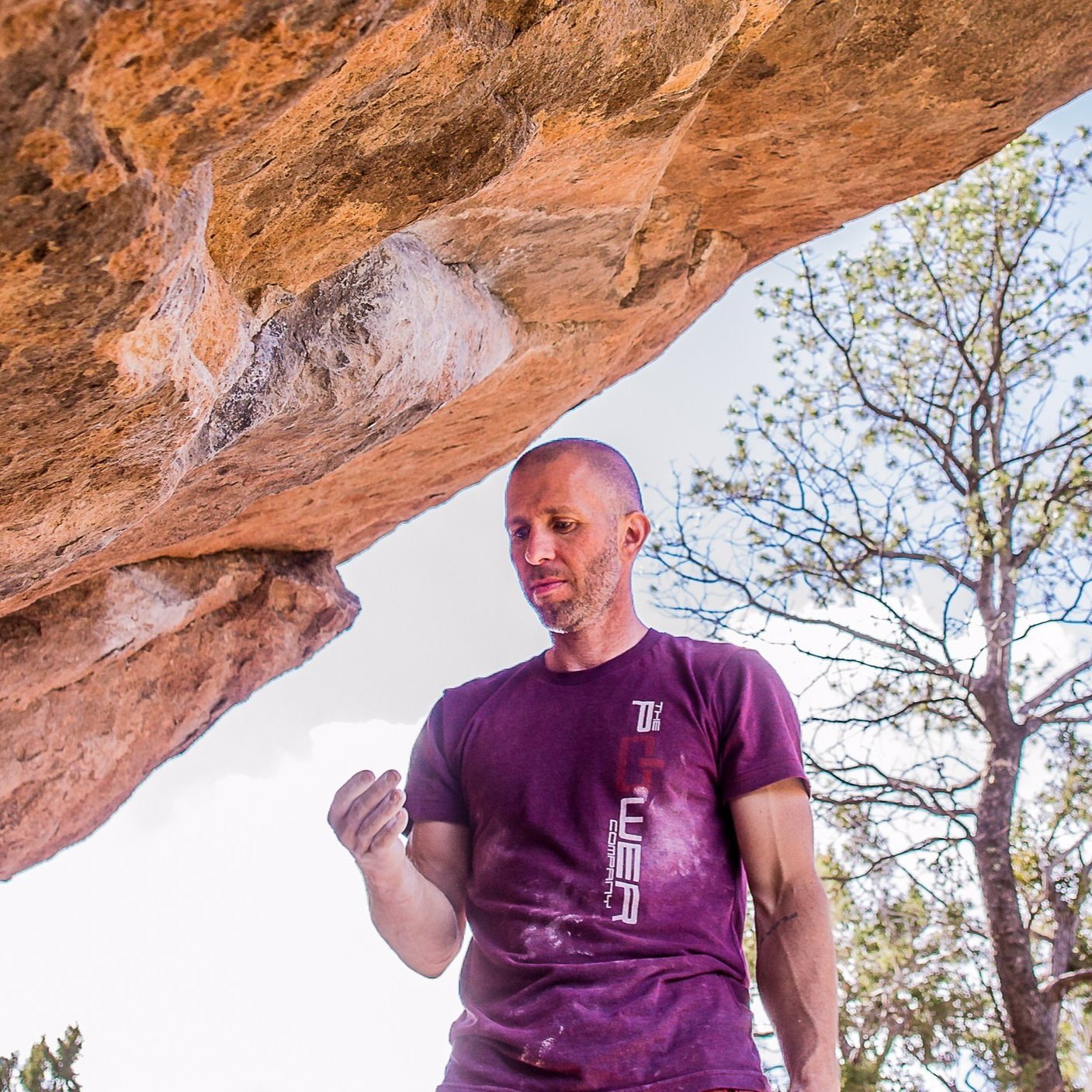Circuit Tape: Better Training Tape for Climbers
We here at The Power Company are always on the lookout for the small things that make a big difference. To better understand where climbers are in need of improved products, we listen first to the most common complaints. We can't control the conditions, so instead we started looking at skin, and how to preserve it.
Our friends at Rhino Skin Solutions have done an amazing job of solving the problem of conditioning and repairing skin, so instead we began thinking about how to reduce wear and tear WHILE climbing. Taping for every go was the obvious answer, but common adhesive tape poses new problems of it's own. Namely, it sucks to climb in, the edges roll up immediately, and it slips far too easily. We also discovered that when taping as a preventative measure, it leaves your skin soft and even more vulnerable to the sharp edges you were taping for to begin with.
After experimenting with several types of tape, we finally settled on one that made all the difference. Chalk and sweat don't affect it at all. It's completely breathable and won't soften your precious tips. It's cut to the size we want it, and it's small enough to put on a draw and take on route (for those that do this sort of thing).
Our new Circuit Tape is a cohesive tape, meaning it doesn't stick to your skin at all, but to itself. Because of this, it won't slide as easily when it's humid and you're sweating. Chalk covered fingers aren't a problem at all. It sticks exactly the same. For training and projecting where skin preservation is a priority, we are confident that there isn't a better solution.
Cohesive tape isn't a new idea. In fact, it was developed in 1947 for use in World War II as a way to hold bandages on in the field, where normal adhesives weren't doing the job. We believe it hasn't caught on in the climbing world because it's uses weren't quite understood. It doesn't work the way adhesive tape does, so it shouldn't be used the same. If you are looking to make tape gloves or support an injured tendon, this isn't the thing for you. If you can't stand the idea of climbing with tape, so you want the thinnest strip possible and expect it to magically stay put, look elsewhere. But if you want to preserve skin prior to the send go, or cover a split that's happening mid session, Circuit Tape is the answer.
For repetitive moves on sharp holds, or circuits that wear away at your fingertips in the same spots, Circuit Tape is the best way to save skin.
For best results, there is a specific way Circuit Tape should be used. While wrapping just one finger joint or pad will work temporarily, if we can create an anchor point on a different joint, it's damned near impossible to get this tape to budge. Heat and stress actually cause the cohesive bond to increase, so it's likely you'll have to snip it off after climbing on it.
Step 1 is to start the anchor wraps on a pad (ideally) below the point you're trying to protect.
After 1 full wrap, transition to the protection point on the palm side of the hand. This will allow the knuckle to have more flex.
After 1 full wrap on the protection point, transfer back to the anchor point, again on the palm side of the hand.
Wrap completely around 1 more time, and finish the wrap on the back side of the hand.
After tearing the Circuit Tape, be sure to "tab" the end so that you're able to find it next time you need it!
After use, simply snip the Circuit Tape at each wrap, and easily tear it away.
Circuit Tape is available in our shop, in 2 and 5 roll packs. It comes in a handy reusable container that you can store in your crag bag to keep your tape clean for when you need it most. Keep the 5 pack in your camper or in your locker at the gym, and use it to refill the 2 pack in your crag kit when your partner steals a roll.















When it comes to skin care in the climbing world, Rhino Skin Solutions is the one name you need to know.